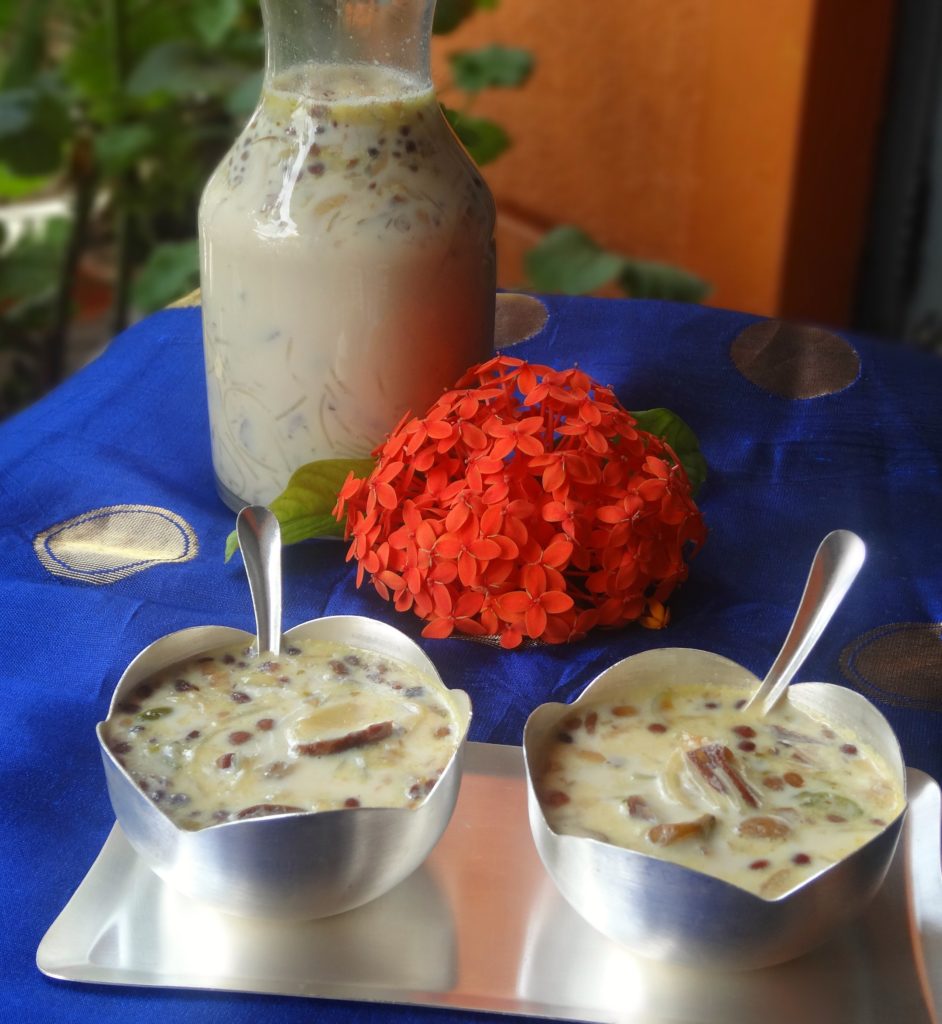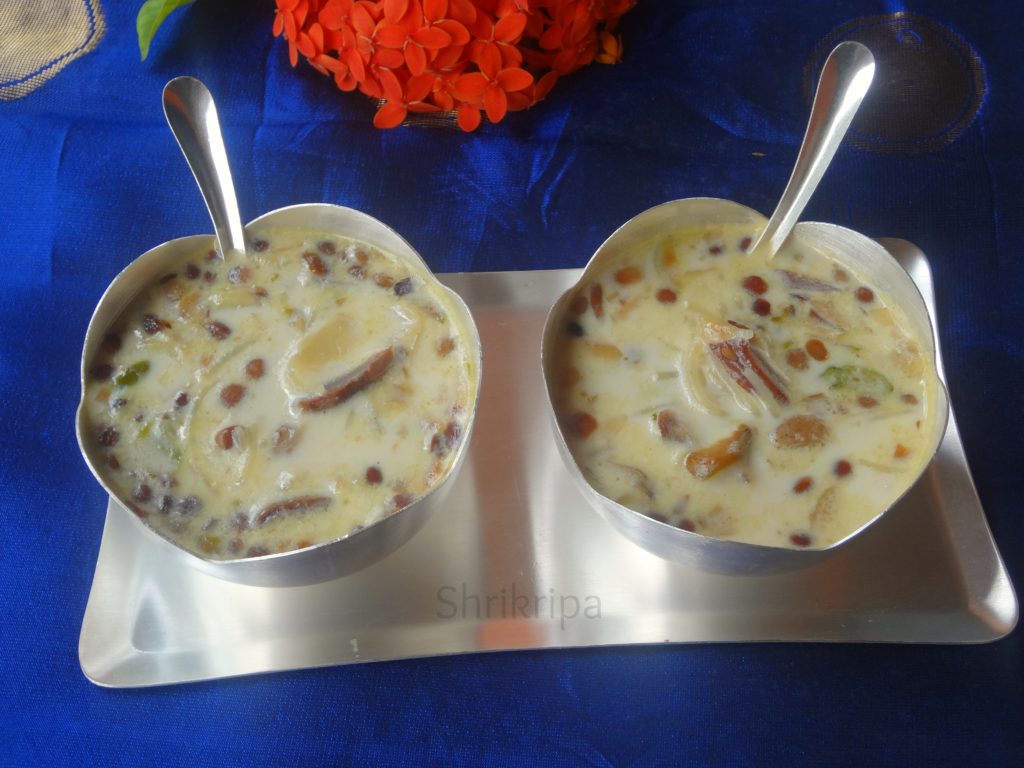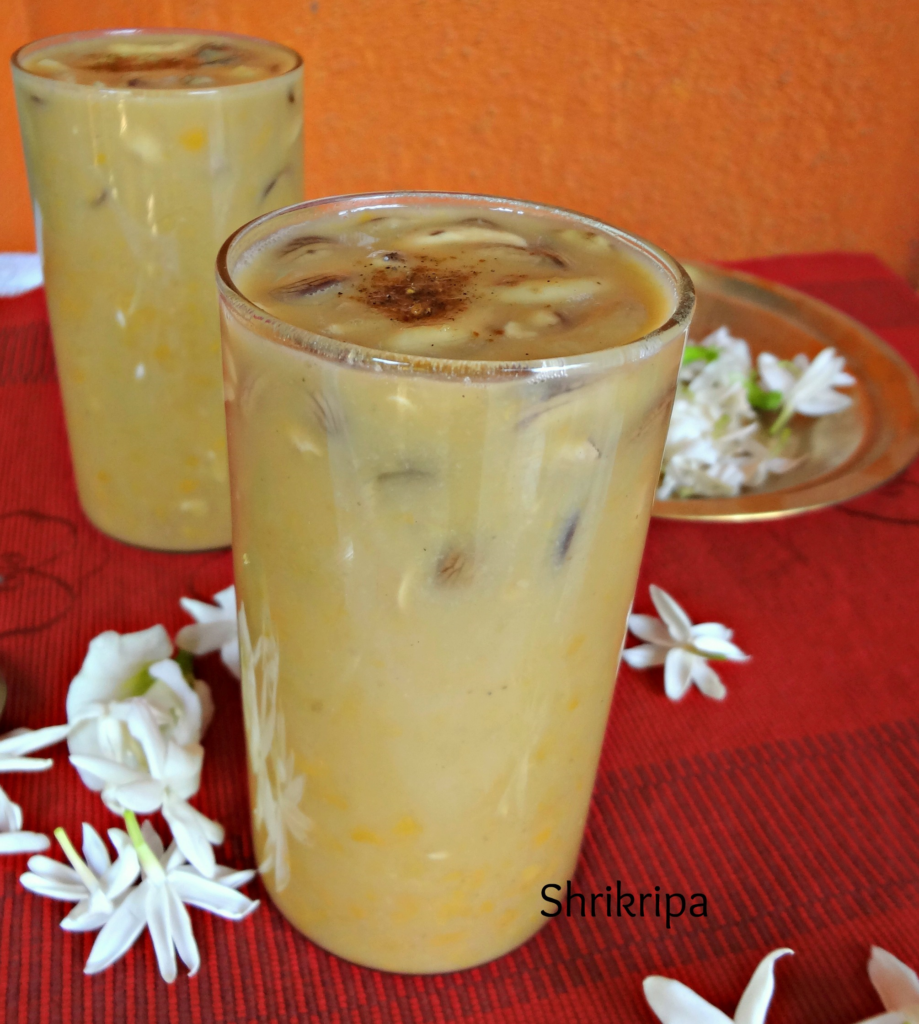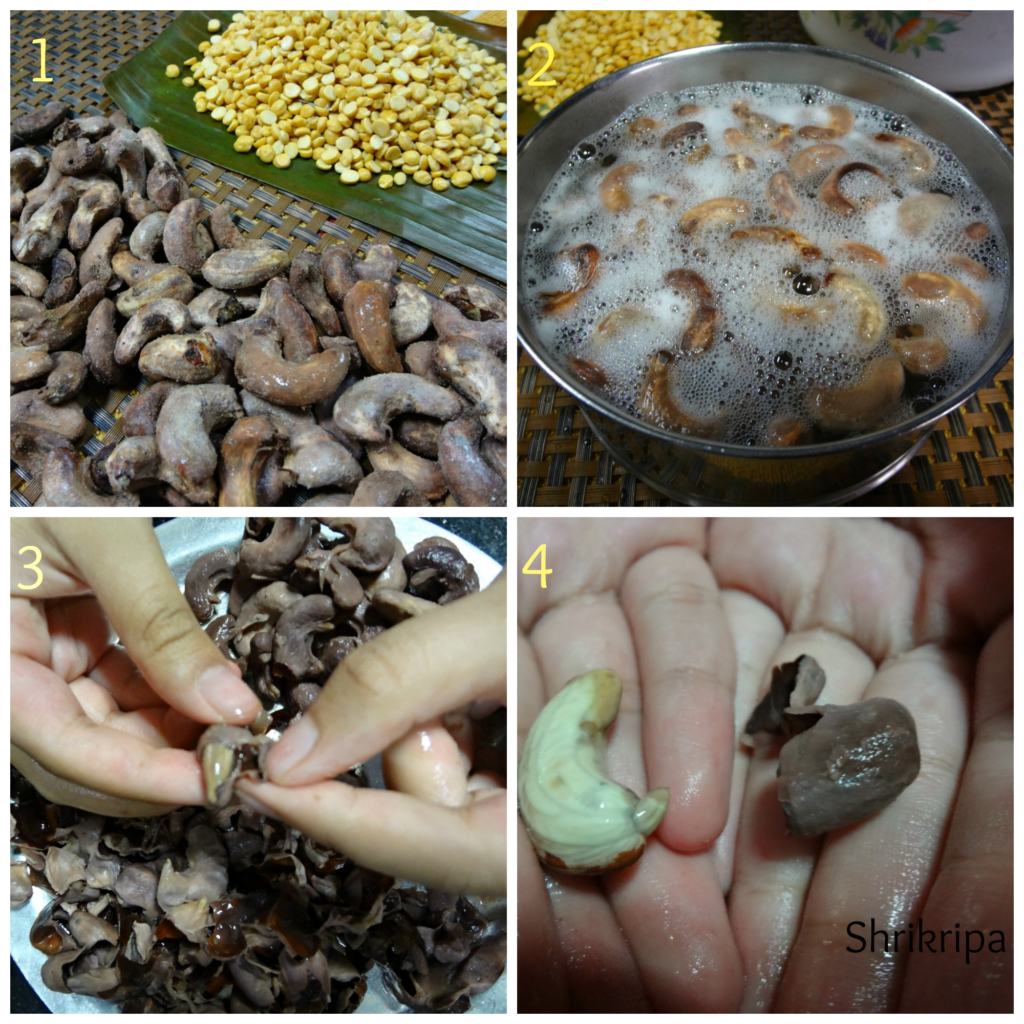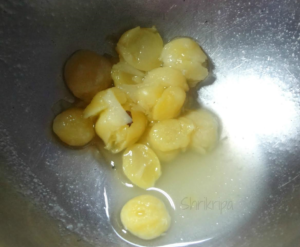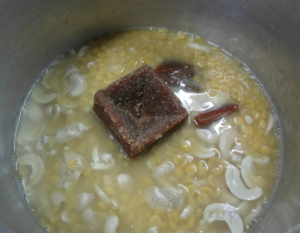Ash gourd halwa is very popular in Coastal belt of South Canara region. It has many names like Kushmanda halwa, Dumroot,Kumbalakai halwa or Kashi halwa. All names are one and the same. Basically, grated Ash gourd is cooked until its water evaporates, further cooked with sugar and some ghee and flavoured with cardamom. Which is a very laborious job, but once you taste it, you will never regret making it.
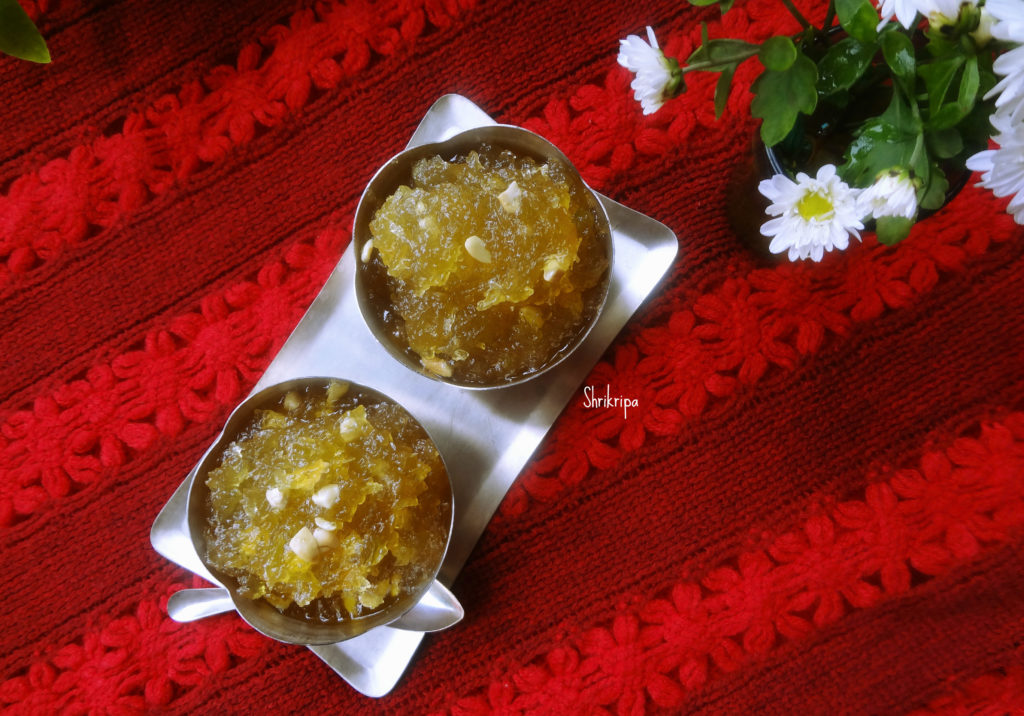
We will see how to prepare this tasty dessert –
Grated Ash gourd – 3 cups (tightly packed)
Sugar – 1 ½ cup
Ghee – ½ to ¾ cup
Salt – a pinch
Cardamom powder – 1 tea spoon
Roasted Cashew nut pieces – ½ cup (as needed)
Method:
-Wash Ash gourd, peel outer skin and remove inner core with seeded part. (Core part can be used to make Sweet Dosa or Plain Dosa batter)

-Grate ash gourd and collect gratings and water which is oozing out while grating.
-Put all this in a thick wok and keep it in a fire. Cook until water dries up.

-When water dries up, add salt, enough sugar, and cook. Once again you will see lots of liquid.
-Don’t worry, mix in-between and wait until it is dries up. Now it is time to start adding ghee at intervals.
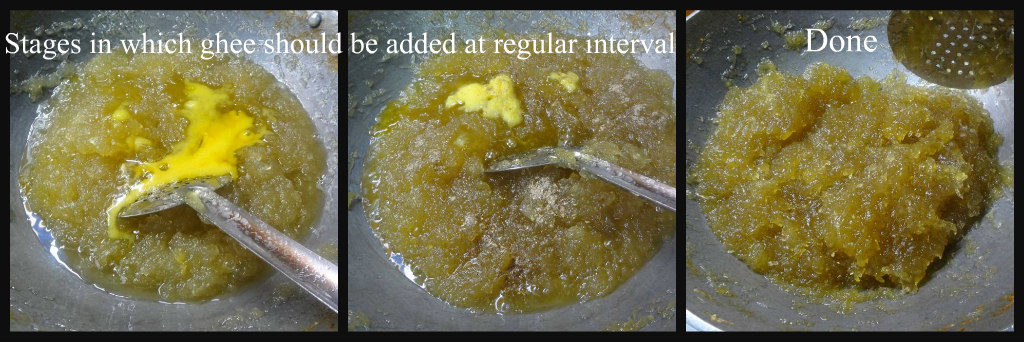
– Now onwards it needs continuous stirring and in-between add 2 table spoons of ghee at a time.
-Keep on stirring until mixture leaves the sides and becomes like a mass.
– When it is done, you will notice three things. When you flip the mixture from the bottom, you will notice little whitish parts (like roasted), when you drop the mixture it will not stick to the spoon and drop like a mass and ghee oozing out at the edges.

-This is when it is perfectly done and time to add Roasted cashew nut pieces, cardamom powder mix thoroughly and switch off the gas .

Now leave this ready Halwa to cool or Serve Hot.
-When it attains a room temperature, store this in an air tight container.

